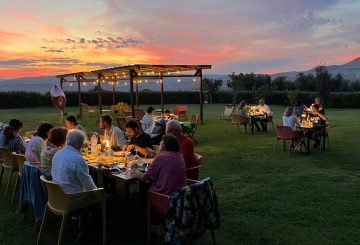ツチボタルやその他の夜行性の虫には、暗闇の中でナビゲートして生き残るという驚くべき能力があります。しかし、光害によって彼らの生活はより困難になっています。日常の生き物である人間は、夜を愛する昆虫に私たちが与える影響に気づいていないことが多いのです。
私たちの目は暗闇で見るのが苦手なので、火や電気を使って夜を照らしてきました。しかし、この人工光は夜行性の昆虫の環境を変えています。実際、世界の陸地の約 23% が光害の影響を受けており、これが昆虫個体数の減少の一因となっていると考えられています。
研究によると、人工照明に引き寄せられた昆虫の約3分の1は、多くの場合、疲労が原因で朝までに死んでしまいます。その結果、個体数や受粉などの重要なプロセスに深刻な影響が及ぶ可能性があります。
多くの虫は、おそらく日中に活動している捕食者を避けるためか、夜間に活発に活動します。ニュージーランドのツチボタルのように、自分で光を出すことさえできるものもあります。
月明かりは太陽光の100万分の1の強さですが、夜行性の昆虫は見たり動き回ったりできます。彼らは、光を取り込んで光受容体に集束させる何百万もの小さなレンズで構成された特別な目を持っています。
一部の人々がどう考えているかとは裏腹に、夜行性の昆虫は人工光に惹かれません。月や星と間違えるからです。実際、彼らは月明かりと星明かりを使って、自分が飛んでいるときにどちらの方向が上かを調べています。
人工照明の色は、夜行性の昆虫にとって人工照明の魅力にも影響します。たとえば、蛾は人間には見えない波長の光を検出でき、青色光に最も敏感です。つまり、LED街路灯から発せられる明るく涼しい白色光は、蛾にとって非常に魅力的だということです。
光害を減らすことで、夜行性の昆虫を保護することができます。夜間にカーテンを閉める、モーションセンサー付きの外灯を使用する、暖かい色の電球を選ぶなどの簡単な操作で大きな違いが生まれます。照明を消して外に出ることは、夜空の美しさを鑑賞するのにも役立ちます。




























































